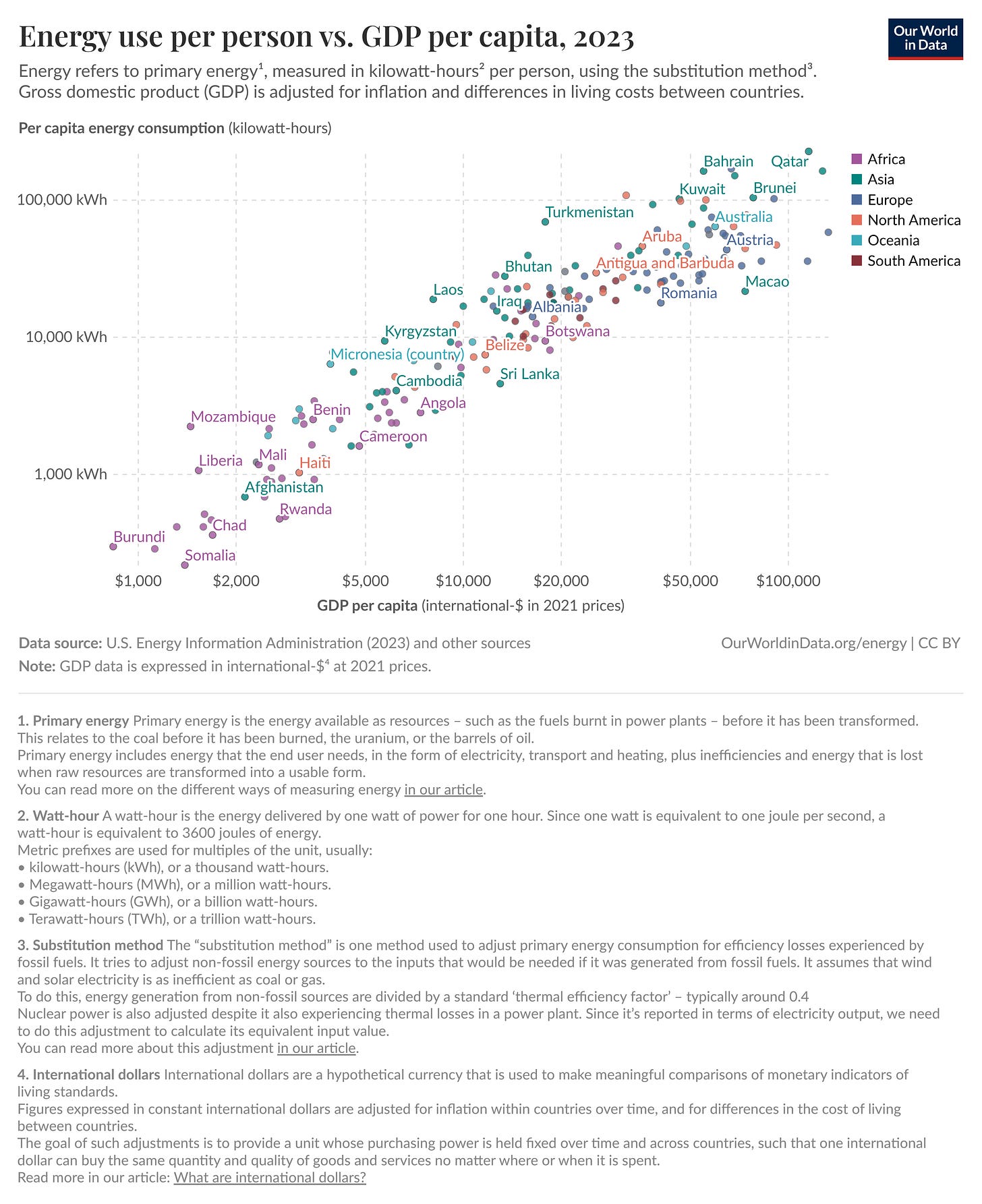The Kaya Crossroads
How Population and Innovation Could Flip the Carbon Equation
There’s a fundamental tension between emissions, energy use, and economic activity.
Wealthier nations tend to consume more energy—there’s a strong correlation between GDP per capita and energy consumption per capita. And for now, more energy still means more emissions.
This dynamic is captured by the Kaya Identity, which expresses emissions as the product of four factors:
The first two terms (in green) represent consumption. They translate people and their economic output into energy demand.
The last two terms (in orange) represent technology.
Energy/GDP reflects how energy-efficient the economy is.
Emissions/Energy shows how carbon-intensive our energy supply is.
Together, those technology terms give us Emissions per unit of GDP. And here’s the remarkable part: this emissions intensity has been steadily falling for more than a century. It peaked in the 1920s and is now back to levels last seen in the mid-1800s.
And yet, total global emissions have soared since the 1920s. Why? Because the consumption terms—population and GDP per capita—have risen even faster.
But even that may be changing. According to the latest UN projections:
Global population is expected to peak around 2086.
Working-age population—the engine of GDP growth—peaks even earlier, around 2070.
Now imagine extending the emissions-per-GDP trend. If it continues, we approach zero emissions per dollar of GDP sometime around… 2070.

Yes, extrapolating trends is risky—and hitting zero likely requires breakthrough technologies like direct air capture.
But what if it’s right? What if population peaks just as emissions intensity turns negative? Both consumption and technology factors in the Kaya Identity could drive emissions below zero.
𝘿𝙚𝙩𝙖𝙞𝙡𝙨:






